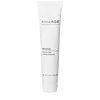What's inside
What's inside
 Key Ingredients
Key Ingredients

 Benefits
Benefits

 Concerns
Concerns

 Ingredients Side-by-side
Ingredients Side-by-side

Carthamus Tinctorius Seed Oil
MaskingC12-15 Alkyl Benzoate
AntimicrobialCaprylic/Capric Triglyceride
MaskingSilica
AbrasivePunica Granatum Sterols
Skin ConditioningSambucus Nigra Fruit Extract
AstringentTocopherol
AntioxidantGlucosyl Ceramide
Skin ConditioningPhospholipids
Skin ConditioningCholesterol
EmollientBisabolol
MaskingStearyl Glycyrrhetinate
Skin ConditioningSh-Oligopeptide-33
Skin ConditioningSh-Polypeptide-64
AntioxidantSh-Polypeptide-5
Skin ConditioningTrehalose
HumectantMannitol
HumectantCarthamus Tinctorius Seed Oil, C12-15 Alkyl Benzoate, Caprylic/Capric Triglyceride, Silica, Punica Granatum Sterols, Sambucus Nigra Fruit Extract, Tocopherol, Glucosyl Ceramide, Phospholipids, Cholesterol, Bisabolol, Stearyl Glycyrrhetinate, Sh-Oligopeptide-33, Sh-Polypeptide-64, Sh-Polypeptide-5, Trehalose, Mannitol
Water
Skin ConditioningCaprylic/Capric Triglyceride
MaskingCarthamus Tinctorius Seed Oil
MaskingGlycerin
HumectantActinidia Chinensis Seed Oil
EmollientC12-16 Alcohols
EmollientInulin
Skin ConditioningXylitylglucoside
HumectantEctoin
Skin ConditioningGlyceryl Stearate
EmollientPalmitic Acid
EmollientHydrogenated Lecithin
EmulsifyingSaccharide Isomerate
HumectantTasmannia Lanceolata Fruit/Leaf Extract
AntioxidantTerminalia Ferdinandiana Fruit Extract
AntioxidantCholesterol
EmollientGlucosyl Ceramide
Skin ConditioningPhospholipids
Skin ConditioningAnhydroxylitol
HumectantXylitol
HumectantTocopherol
AntioxidantGlucose
HumectantPhytic Acid
Citric Acid
BufferingSodium Citrate
BufferingSodium Hydroxide
BufferingXanthan Gum
EmulsifyingSh-Oligopeptide-1
Skin ConditioningSh-Oligopeptide-2
Skin ConditioningSh-Polypeptide-31
Skin ConditioningSh-Polypeptide-5
Skin ConditioningSh-Polypeptide-10
Skin ConditioningSh-Polypeptide-11
Sh-Polypeptide-1
Skin ConditioningSh-Polypeptide-6
HumectantBenzyl Alcohol
PerfumingDehydroacetic Acid
PreservativeParfum
MaskingWater, Caprylic/Capric Triglyceride, Carthamus Tinctorius Seed Oil, Glycerin, Actinidia Chinensis Seed Oil, C12-16 Alcohols, Inulin, Xylitylglucoside, Ectoin, Glyceryl Stearate, Palmitic Acid, Hydrogenated Lecithin, Saccharide Isomerate, Tasmannia Lanceolata Fruit/Leaf Extract, Terminalia Ferdinandiana Fruit Extract, Cholesterol, Glucosyl Ceramide, Phospholipids, Anhydroxylitol, Xylitol, Tocopherol, Glucose, Phytic Acid, Citric Acid, Sodium Citrate, Sodium Hydroxide, Xanthan Gum, Sh-Oligopeptide-1, Sh-Oligopeptide-2, Sh-Polypeptide-31, Sh-Polypeptide-5, Sh-Polypeptide-10, Sh-Polypeptide-11, Sh-Polypeptide-1, Sh-Polypeptide-6, Benzyl Alcohol, Dehydroacetic Acid, Parfum
Alternatives
Ingredients Explained
These ingredients are found in both products.
Ingredients higher up in an ingredient list are typically present in a larger amount.
This ingredient is an emollient, solvent, and texture enhancer. It is considered a skin-softener by helping the skin prevent moisture loss.
It helps thicken a product's formula and makes it easier to spread by dissolving clumping compounds.
Caprylic Triglyceride is made by combining glycerin with coconut oil, forming a clear liquid.
While there is an assumption Caprylic Triglyceride can clog pores due to it being derived from coconut oil, there is no research supporting this.
Learn more about Caprylic/Capric TriglycerideCarthamus tinctorius seed oil comes from safflower, one of humanity's oldest crops.
Safflower seed oil contains a high percentage of linoleic acid and oleic acid. It also contains Vitamin E. These three components are effective moisturizers.
Vitamin E helps nourish your skin's lipid barrier. It is also a potent antioxidant. Antioxidants help fight free-radical molecules, or unstable molecules that may damage your skin cells.
Due to its high fatty acid content, this ingredient may not be malassezia folliculitis safe.
Thoughout history, safflower has been used for dying fabrics and in food as a saffron substitute.
Learn more about Carthamus Tinctorius Seed OilCholesterol is a class of organic molecules called lipids. It helps hydrate your skin and is essential to having a healthy skin barrier.
Our skin naturally contains cholesterol in the outermost layer. Besides cholesterol, it also contains ceramides and fatty acids. Cholesterol makes up about 1/4 of your skin's outer layer and barrier. Your skin barrier is responsible for keeping allergens and microbes out. Having a healthy skin barrier is also responsible for keeping your skin firm and plump.
Our bodies use cholestrol to create vitamin D, steroid hormones, and more.
Learn more about CholesterolGlucosyl Ceramide is made from glucose and a ceramide. It has skin hydrating and barrier repair properties.
This ingredient is naturally found in the epidermis, or upper layers of skin, as the main glycosphingolipid. Glycosphingolipids play a role in maintaining a strong and hydrated skin barrier.
Fun fact: Consuming glucosyl ceramide has been shown to provide skin benefits. You can get your intake by eating wheat, corn, soybeans, and shiitake mushrooms.
Learn more about Glucosyl CeramidePhospholipids are naturally found in our skin as they are the main component of cell membranes. Phospholipids have humectant, emollient, antioxidant properties.
Phospholipids are complex lipids that contain glycerin, two fatty acids, and a phosphate group. Some foods that contain phospholipids include soybeans and milk. The phospholipids found in soy come from Lecithin. This ingredient can also be synthetically created.
Due to their hygroscopic nature, they act as both humectants and emollients. Humectants draw moisture from the air to your skin, while emollients help trap moisture in.
The phospholipids in our skin can be naturally depleted. Replenishing the phospholipids in our skin can help hydrate your skin.
Studies show phospholipids display antioxidant activity and may help with reducing the signs of aging.
This ingredient is non-occlusive.
Some types of phospholipids:
Learn more about PhospholipidsSh-Polypeptide-5 is a peptide.
Tocopherol (also known as Vitamin E) is a common antioxidant used to help protect the skin from free-radicals and strengthen the skin barrier. It's also fat soluble - this means our skin is great at absorbing it.
Vitamin E also helps keep your natural skin lipids healthy. Your lipid skin barrier naturally consists of lipids, ceramides, and fatty acids. Vitamin E offers extra protection for your skin’s lipid barrier, keeping your skin healthy and nourished.
Another benefit is a bit of UV protection. Vitamin E helps reduce the damage caused by UVB rays. (It should not replace your sunscreen). Combining it with Vitamin C can decrease sunburned cells and hyperpigmentation after UV exposure.
You might have noticed Vitamin E + C often paired together. This is because it is great at stabilizing Vitamin C. Using the two together helps increase the effectiveness of both ingredients.
There are often claims that Vitamin E can reduce/prevent scarring, but these claims haven't been confirmed by scientific research.
Learn more about Tocopherol